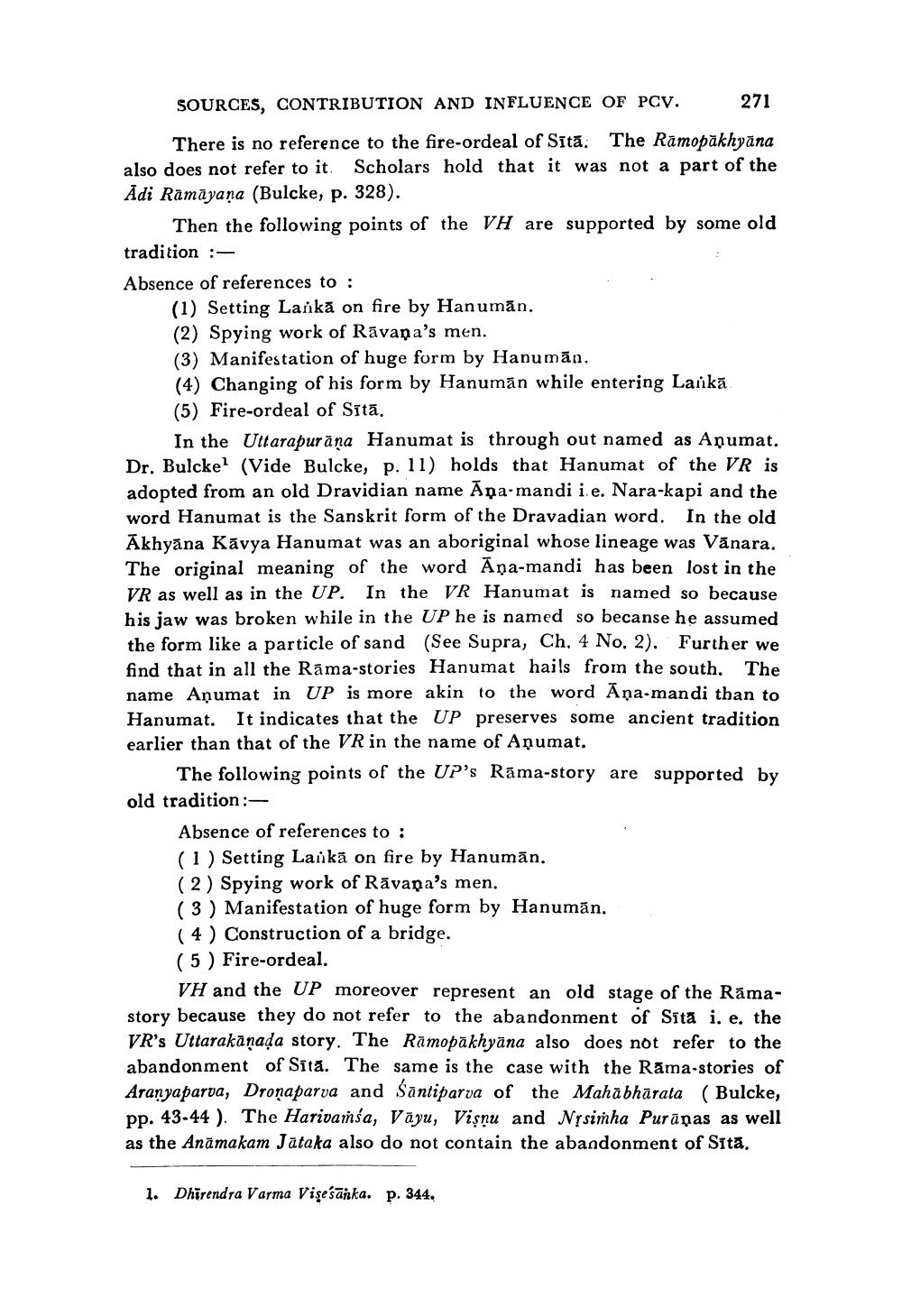________________
SOURCES, CONTRIBUTION AND INFLUENCE OF PCV.
271
There is no reference to the fire-ordeal of Sītā. The Rāmopākhyāna also does not refer to it. Scholars hold that it was not a part of the Ādi Rāmāyaṇa (Bulcke, p. 328).
Then the following points of the VH are supported by some old tradition :Absence of references to :
(1) Setting Lanka on fire by Hanumān. (2) Spying work of Rāvana's men. (3) Manifestation of huge form by Hanumān. (4) Changing of his form by Hanumān while entering Laukā (5) Fire-ordeal of Sītā.
In the Uttarapurāņa Hanumat is through out named as Aņumat. Dr. Bulcke? (Vide Bulcke, p. 11) holds that Hanumat of the VR is adopted from an old Dravidian name Apa mandi ie. Nara-kapi and the word Hanumat is the Sanskrit form of the Dravadian word. In the old Ākhyāna Kávya Hanumat was an aboriginal whose lineage was Vănara. The original meaning of the word Aņa-mandi has been lost in the VR as well as in the UP. In the VR Hanumat is named so because his jaw was broken while in the UP he is named so becanse he assumed the form like a particle of sand (See Supra, Ch. 4 No. 2). Further we find that in all the Rama-stories Hanumat hails from the south. The name Aņumat in UP is more akin to the word Āņa-mandi than to Hanumat. It indicates that the UP preserves some ancient tradition earlier than that of the VR in the name of Anumat.
The following points of the UP's Rāma-story are supported by old tradition:
Absence of references to : (1) Setting Larikā on fire by Hanumān. (2) Spying work of Rāvana's men. (3) Manifestation of huge form by Hanumān. ( 4 ) Construction of a bridge. (5) Fire-ordeal.
VH and the UP moreover represent an old stage of the Ramastory because they do not refer to the abandonment of Sita i. e. the VR's Uttarakānada story. The Rāmopākhyāna also does not refer to the abandonment of Sita. The same is the case with the Rama-stories of Aranyaparva, Dronaparva and Santiparva of the Mahabhärata (Bulcke, pp. 43-44 ). The Harivañía, Vāyu, Vişnu and Nysimha Purānas as well as the Anāmakam Jataka also do not contain the abandonment of Sita.
1. Dhirendra Varma Vişeśānka. p. 344,




